Review: Apple TV (2015)
 Friday, November 20, 2015 at 2:21PM
Friday, November 20, 2015 at 2:21PM 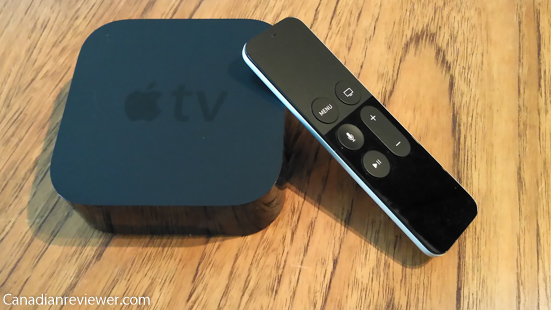 By Gadjo Cardenas Sevilla
By Gadjo Cardenas Sevilla
Apple TV (2015) finally sees Apple’s set top box transcend its iTunes roots into larger and more expansive apps, entertainment, gaming and much more.
The latest version of the Apple TV is impeccably designed and smartly positioned as Apple’s play for the living room and possibly the central nervous system for HomeKit enabled smart devices.
Apple TV has actually placed itself in the line of fire in one of the most competitive segments in consumer electronics and entertainment. There's already heated competition with established players like Roku, Amazon (Fire) and Google with its insanely popular (and cheap) Chromecast. Apple TV (2015) is also competing against the previous incarnation, which is also cheaper, but far less powerful or versatile.
Apple TV (2015) starts at CAD $199 for the 32GB version and up to $269 for the 64GB version. The Roku 3 costs $109 by comparison, Google Nexus Player will cost you CAD $69.56 from Staples Canada (on sale) and the older 3rd Gen Apple TV is a bargain at CAD $89. So, yeah. Not cheap.
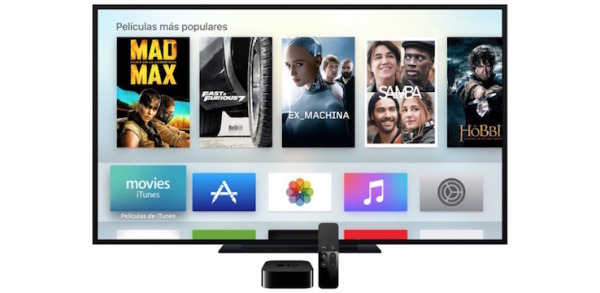
Aside from a faster Apple A8 processor, more memory and bigger storage, Apple TV now has improved WiFi connectivity, a far more intuitive remote control which takes both voice as well as multi-touch input plus has some motion sensing and accelerometer features for playing certain games. You can also mate it with a third-party game controller and get more mileage with some titles.
Out of the Box Experience
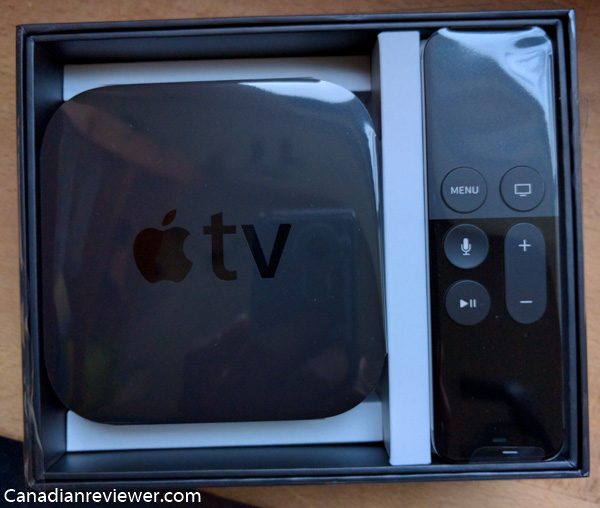
Out of the box, the new Apple TV is a far more lavish affair than the dowdy first gen and second generation devices. It still retains its black puck-like form but is twice as tall as the previous versions.
The remote control is now shiny plastic with a stainless steel back. The touchpad and the Siri microphone are front and centre. Simplicity is still part of the recipe and there are a lot of Apple touches that many will appreciate.
The remote can be charged via your iPhone or iPad’s Lightning connector, the redesigned OS looks great and is fast and fluid. It is surprising that Apple TV doesn’t offer a way to hijack your live TV or cable TV connection and integrate it into the system (which my Xbox One does for its OneGuide interface), having an elegant and connected interface to supersede the slow and outdated cable box would be a killer feature.
Plugging in Apple TV is dead easy. An HDMI port goes into your TV and a plug goes to the power. Connecting via Wi-Fi or Ethernet (preferable) is easy. You do need to sign into your Apple ID, and each time you want to download an app or buy something, you need to key in your password.
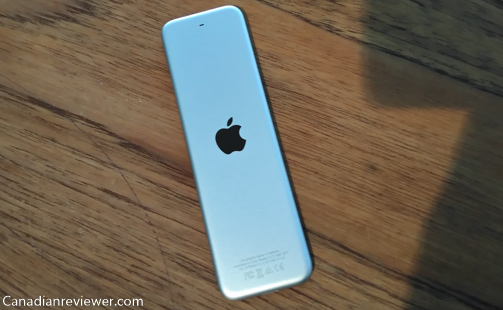
While the remote control (now using Bluetooth) is fast, the new interface to type passwords or run searches is maddening. There’s just something about the unusual way the letters are positioned that I find confusing and tedious. A regular QWERTY keyboard layout might have been more intuitive or at least more familiar.
Unlike in previous versions, there’s no companion iOS remote app which could be used for text entry on an iPhone.
Once connected, the user interface is a visual and functional improvement over the previous version. There’s now an App Store where each channel has to be installed as an app. I quickly accessed Netflix and this went smoothly. I liked that many of the shows and movies I purchased on iTunes years ago, were still available.
Opening Netflix and resuming a show or finding something new to watch is way faster on the new Apple TV than it is on other devices, Xbox One and Roku 3 included.
Using the touch functionality to scroll through rows and rows of content is so much faster and friction-free than using a physical button. I also loved that Apple TV remote automatically allows you to control your TV’s main volume! No more hunting for your other remote just to pump up the volume.
The new apps approach to Apple TV really opens up various possibilities that extend beyond what comes in the box. Apple TV is also more powerful and has more storage space. It has evolved from a dumb terminal for iTunes into a mini computer capable of running apps, games and various experiences.
Apps are happening

I downloaded Sago Sago Fairy Tales for my three-year-old son who can work an iPad exceptionally well (how do they find the shows they like on YouTube without typing or searching?). Using a device like Siri Remote and not the screen perplexed him at first (what is this sorcery?), but he figured it out soon enough and while not as comfortable as he is gliding on the iPad’s screen, he managed to get some enjoyment out of a larger format display.
I think a lot of users, young and old, will need to get used to translating touch form direct display interaction to the small Siri Remote. I like the size and the build of the Siri Remote and swiping instead of pushing buttons is great, but I still stumble around when navigating it. I think I would most certainly use an iPhone or iPad app if it were made available.
Speaking of apps, this is really the Apple TV’s forte. While the competition may offer a smattering of casual games and the requisite apps for Hulu, Netflix, Crave TV and other services on the menu, no one has an installed developer base that can match iOS.
tvOS is a fork of iOS but Apple has made it easy for existing app developers to spin off their mobile apps for the big screen. One of the more impressive examples of this is Airbnb, which gives you full-screen views of potential homes away from home. Same with Zillow, which is a real estate app that includes estimates, home valuations and mortgage history all impeccably presented.
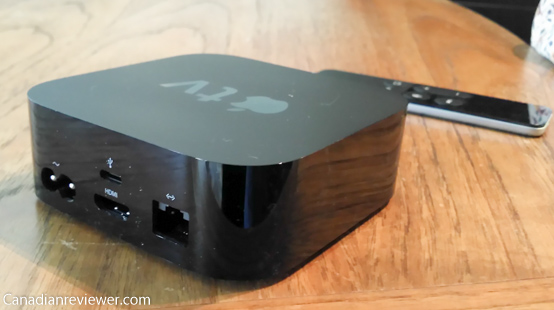
While yes, these are basically web services that are accessed by apps, it is apparent that many experiences can be repurposed for a big screen.
The potential is huge. Take shopping apps for example where you can peruse items and even purchase right from your, or what if you wanted to price and design a new car and can do so on your TV. Not only is this more intuitive than a web browser on a PC. Panoramic views, immersive interiors and really getting a visual feel for the product works so much better on larger screens.
Siri is the showstopper
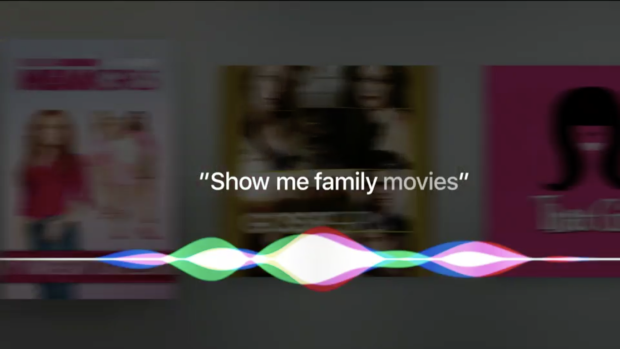
Users of apps that support Siri voice assistant on the Apple TV really feel like the future. Not only can you run searches on specific actors, directors, titles, movie genres and new vs. old movies, you can also use Siri to go back a few seconds and replay a scene.
Since the Siri microphone is on the controller, you can also be as far from the display and still get Siri to hear you loud and clear. I prefer using video projectors for watching movies from iTunes and Netflix and in the past it was hard to control anything but with Apple TV, it is really smooth. Same goes for Apple Music, which makes the Apple TV a pretty kickass music terminal if you are a subscriber and if you have a nice pair of speakers or even a soundbar connected to Apple TV.
Apple has made enough updates to Apple TV that it deserves a permanent place next to your HDTV (not 4K, since this version can’t manage 4K resolutions. That’s likely coming in next year’s update).
Conclusion
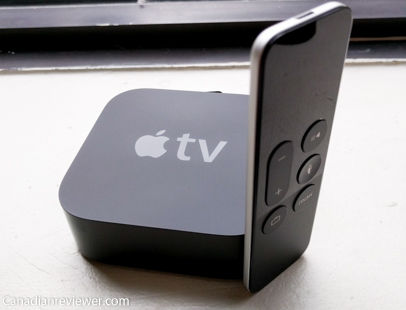
Apple TV (2015) finally sees Apple’s set top box transcend its iTunes roots into larger and more expansive apps, entertainment, gaming and much more.
The hardware is finally at a place where developers can take full advantage of the touch and voice features plus is powerful enough to blow up apps and games for larger displays and still perform silky smooth.
Apple TV (2015) falls short of the game changing device many expected, but this is simply because it may lack the range of available content exclusives, original content and programming as well as the ability to take over and organize the mess of Cable TV boxes.
Once we get bespoke apps for specific services like HBO Go, NBA TV and more content on demand, then this will truly be the cord cutters dream device. For now, the Apple TV is about opening doors to apps, extending Apple's ecosystems beyond mobile and desktop.
It is still an upgrade worth checking out and one that will get better through time as apps and experiences trickle in.
Rating: 3.5 out of 5




















Reader Comments